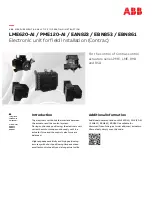
Configuration Specification
4-28
The IPNET entry instance structure is defined as follows:
// IPNet Instance
typedef struct _ci_ipnet {
uint NetType; // Network address type flags
IPN IPAddr; // IP Address
IPN IPMask; // Subnet Mask
HANDLE hBind; // Binding handle (initially NULL)
char Domain[CFG_DOMAIN_MAX]; // IPNet Domain Name
} CI_IPNET;
The individual fields are defined as follows:
-
uint NetType;
This is type of network that appears on the interface. The network type de-
termines how the network is treated by some services like NAT, DHCP, and
DNS. The value is a collection of one or more of the following flags:
J
CFG_NETTYPE_DYNAMIC – Address created by DHCP CLIENT
J
CFG_NETTYPE_VIRTUAL – Virtual Network used by DNS resolver
J
CFG_NETTYPE_DHCPS – Virtual Net Server reported by DHCP
SERVER
Most of the flags deal with the virtual network (or home network). If none of
these flags are set, the network is a normal physical network. Note that
virtual and non-virtual networks should not appear on the same interface.
Also, only one network entry on each interface can have any of these flags
set, although more than one of these flags can be set in that one entry.
-
IPN IPAddr;
This is the IP address of the stack on the designated interface. When the
NetType flag “DHCPS” is set, this address is also the “gateway” address
reported to DHCP clients served by the DHCP server service.
-
IPN IPMask;
This is the IP network subnet mask.
-
HANDLE hBind;
This is the stack’s internal binding handle for the network. Each connected
network is represented as a binding internally to the stack. This is dis-
cussed further in the appendices at the end of this document. The value
should be initialized to NULL.
-
char Domain[CFG_DOMAIN_MAX];
This is the domain name of the network. It should be a full domain like
“home1.net”, not just “home1”.
















































